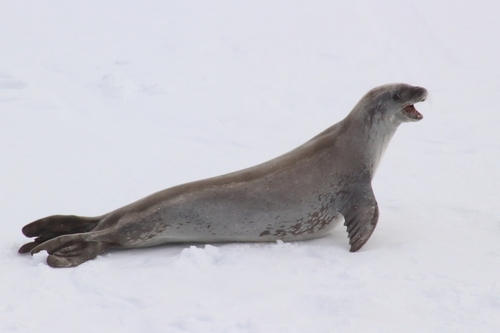
Crabeater Seal
The crabeater seal thrives in Antarctica’s icy waters, with its lobed teeth perfectly adapted for krill filtering. These agile swimmers play a crucial role in the marine ecosystem, showcasing nature's genius in survival amidst extreme conditions.
40 years
Lifespan
272.16 kg
Weight
Length: 2.01 - 2.5 m; Height: 30 - 61 cm
Size
Brown, Grey, White
Color
3-4 years
Age of Sexual Maturity
3 weeks
Age of Weaning
15 mph
Top Speed
Least Concern
Conservation Status
Unknown
Population Trend
Characteristics
The crabeater seal, Lobodon carcinophaga, is found in the pack ice zones surrounding Antarctica. It primarily feeds on krill, despite its name, using its uniquely lobed teeth to filter these small crustaceans from the water. Crabeater seals are known for their streamlined bodies and excellent swimming abilities, aiding their survival in harsh polar environments.
Distribution Range of the Crabeater Seal
Lobodon carcinophaga, commonly known as the crabeater seal, is native to the Antarctic region. Its geographical distribution extends along the circumpolar Antarctic pack ice zone, primarily on the coasts of Antarctica and adjacent islands.
Crabeater Seal's Habitat
Environmental Conditions
The crabeater seal inhabits the cold, icy waters surrounding Antarctica. It is typically found on the pack ice, which provides a platform for resting, breeding, and molting. This region is characterized by extreme cold temperatures, with sea ice present year-round, though it experiences seasonal fluctuations.
Ecological Niche
Crabeater seals are adapted to a life predominantly spent on the ice and in the water. They feed primarily on Antarctic krill, making them a crucial part of the Antarctic marine food web. Their ecological niche is highly specialized to the ice-covered regions, where they are well-camouflaged and protected from predators like orcas and leopard seals.
Copyright @ Nature Style Limited. All Rights Reserved.
 English
English